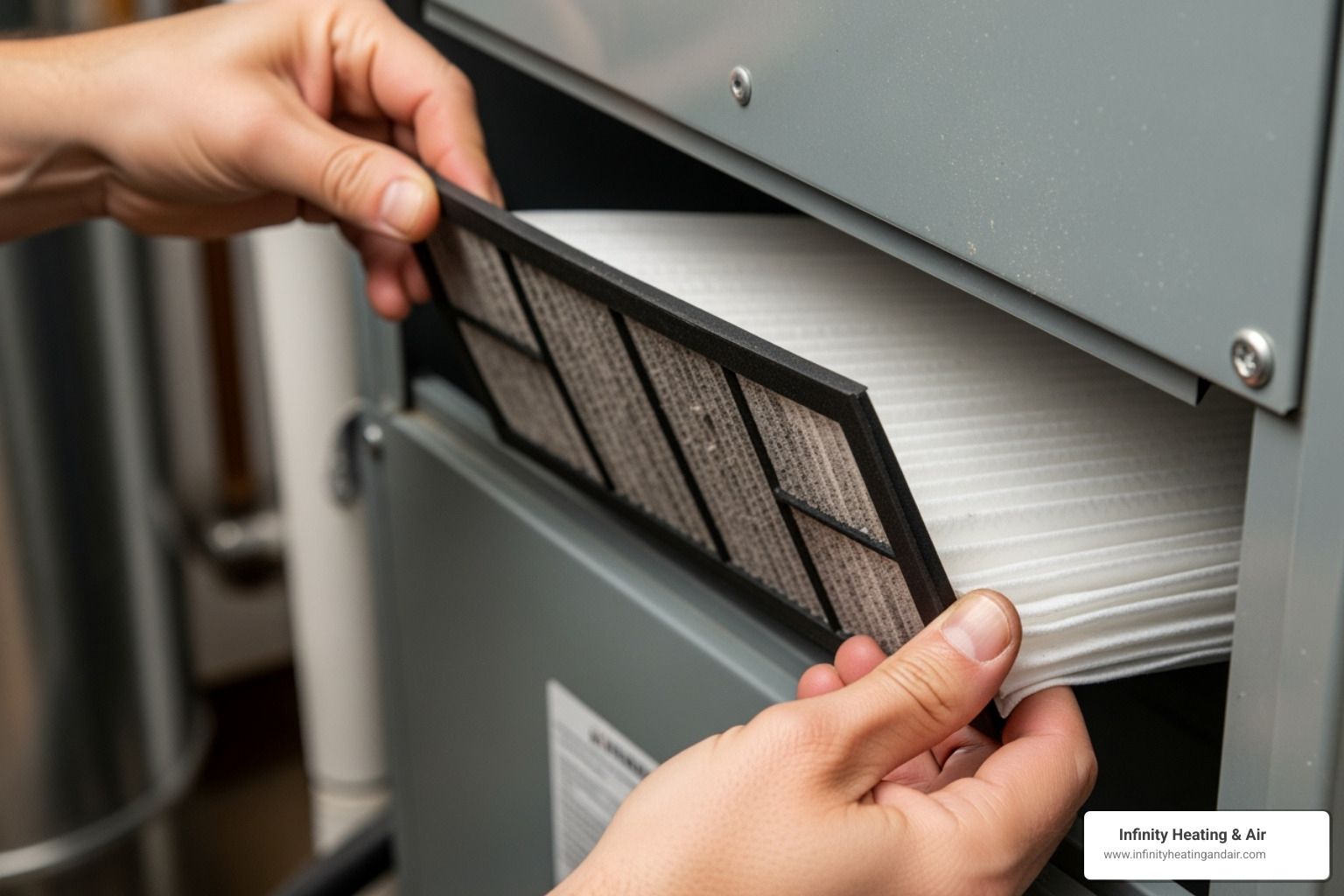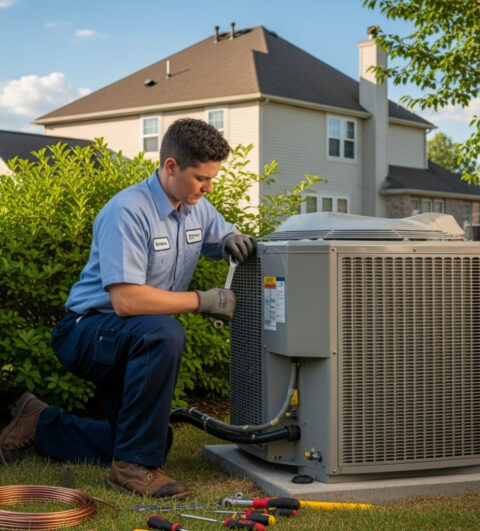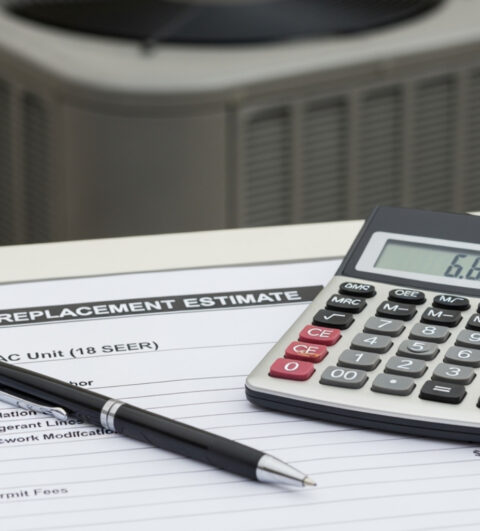Master furnace filter replacement! Improve air quality, save on bills, and extend your HVAC's life with our easy DIY guide.
Why Furnace Filter Replacement Matters for Your Home’s Health
Furnace filter replacement is a simple yet crucial maintenance task for every homeowner. Here’s a quick overview:
Quick Answer for Filter Replacement:
- Replace every 1-3 months for basic filters.
- Turn off furnace power before starting.
- Check filter size on the old filter’s frame.
- Install with airflow arrows pointing toward the furnace.
A dirty filter restricts airflow, forcing your system to work harder and shortening its lifespan. In Northwest Washington’s climate, with damp winters and dusty summers, your HVAC system is already under stress.
Regular filter changes deliver three key benefits:
- Cleaner air: Traps dust, pollen, and allergens.
- Lower energy bills: Better airflow reduces system strain.
- Longer equipment life: Prevents dust buildup on vital components.
The good news is that this is a simple DIY task. With a few basic tools and about 10 minutes, you can protect your investment and breathe easier without needing to schedule a service call.
Whether you have pets, seasonal allergies, or just everyday dust, changing your filter regularly is essential for maintaining clean and healthy air in your home. A clean filter keeps your home’s air quality clean and healthy, as research consistently shows.
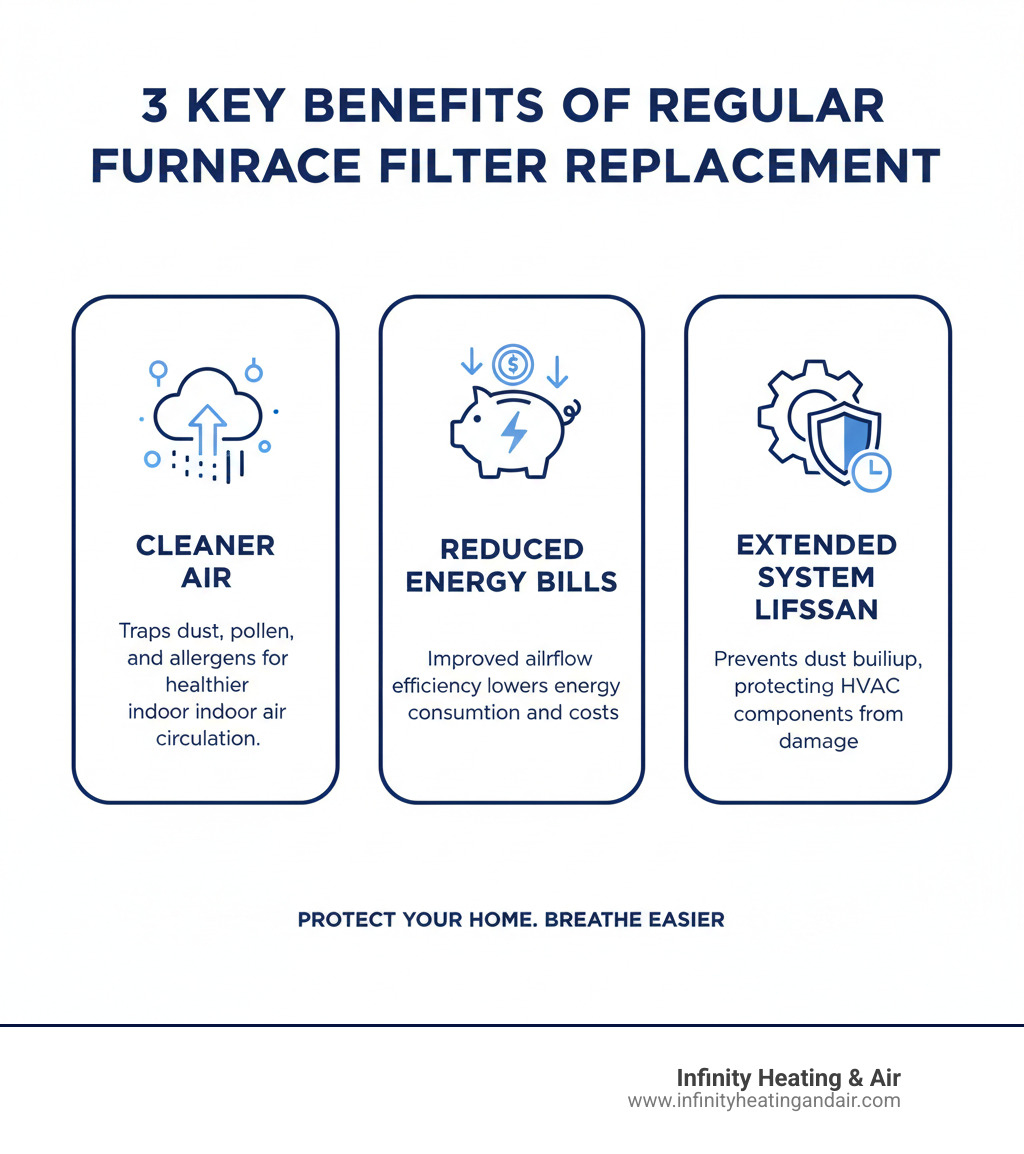
Why a Clean Filter is Your HVAC System’s Best Friend
Your furnace filter is your home’s first line of defense, protecting your HVAC system and your indoor air. Staying on top of furnace filter replacement creates a chain reaction of benefits.
A clean filter ensures improved energy efficiency. A dirty filter forces your furnace to work harder, using more electricity and straining components to move air. In Northwest Washington, where systems work hard through damp winters and dusty summers, this extra strain adds up. A clean filter lets your furnace operate efficiently, leading to reduced utility bills.
Regular furnace filter replacement also delivers an extended furnace lifespan. When dust gets past a clogged filter, it settles on sensitive parts like the blower motor and evaporator coils. This buildup causes premature wear and can lead to expensive breakdowns.
Most importantly, a clean filter means better indoor air quality. Significant health benefits come from clean air, and your filter is key. It captures dust, pet dander, pollen, and mold spores. For families with allergies or respiratory issues, this allergy symptom reduction is crucial. The filter acts as a dust and pollutant capture system, trapping particles that would otherwise circulate in your home.
Signs Your Filter Needs Changing
Your furnace will give you signs when it’s time for a change. Look out for these red flags:
- Visible dirt and dust buildup: If the filter is caked with debris, it’s overdue for replacement.
- Reduced airflow from vents: Weak airflow often points to a clogged filter.
- Increased dust around the home: If you’re dusting more often, your filter may no longer be effective.
- Furnace running longer than usual: A dirty filter makes your system work overtime to reach the set temperature.
- Unusual noises from the furnace: Whistling or humming can indicate the blower motor is straining.
- Musty odors when the system turns on: A dirty filter can harbor mold and bacteria, creating unpleasant smells.
Catching these warning signs early keeps your home comfortable and your family breathing easier.
Decoding Furnace Filters: MERV Ratings and Types
Choosing the right furnace filter can feel overwhelming, but understanding the basics makes it simple. The goal of furnace filter replacement is to find the right balance between air filtration and airflow for your system. A filter that’s too restrictive can strain your furnace, while one that’s too loose won’t clean the air effectively.
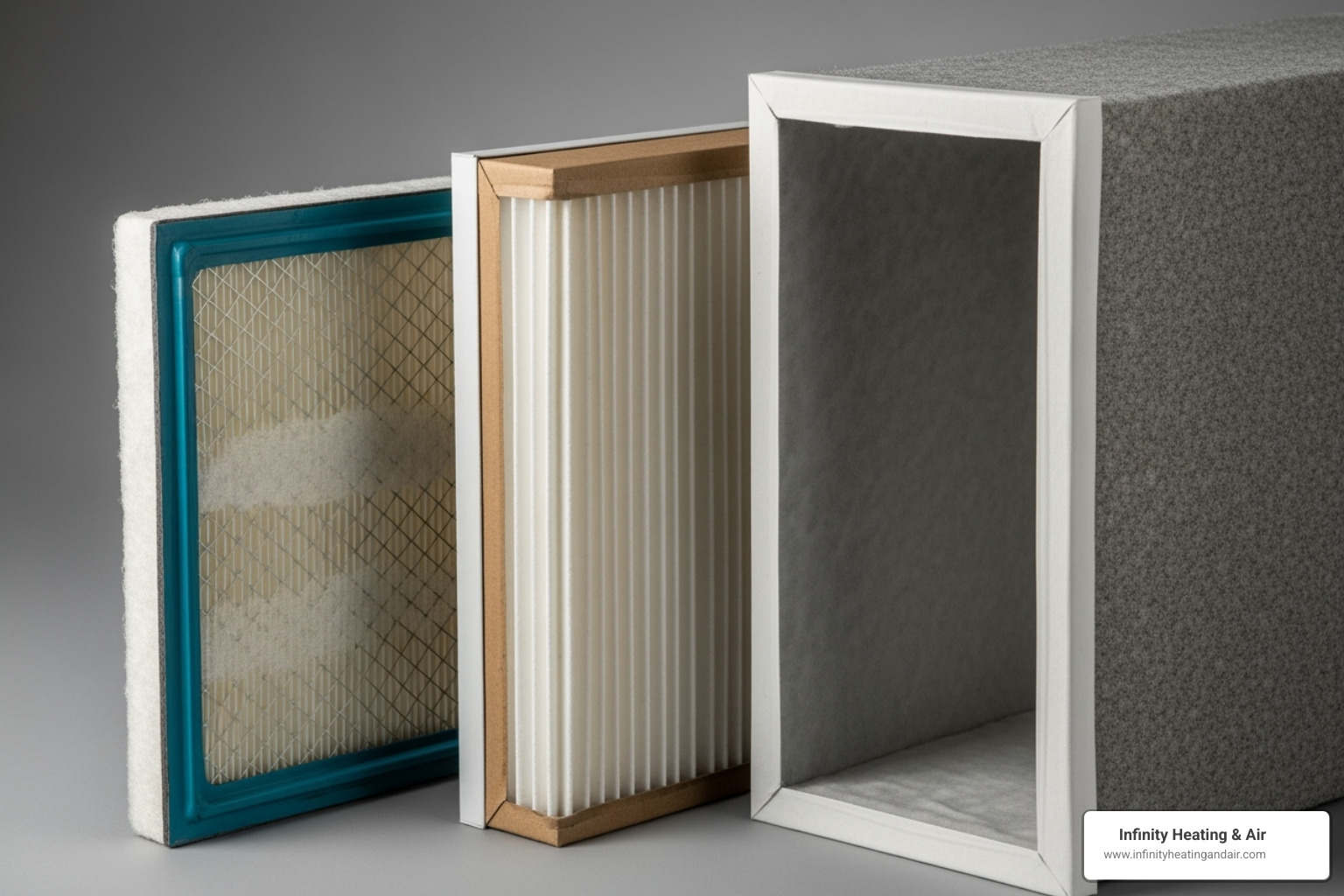
Understanding MERV Ratings
Every filter has a MERV rating, which stands for Minimum Efficiency Reporting Value. This number, from 1 to 20, tells you how effective the filter is at trapping small particles. Higher numbers mean better filtration but also more airflow resistance.
| MERV Rating | Particle Capture Efficiency | Common Contaminants Trapped | Balance with Airflow |
|---|---|---|---|
| 1-4 | Basic Filtration | Dust mites, carpet fibers, pollen, lint | Excellent airflow, minimal protection |
| 5-8 | Good Filtration | Mold spores, pet dander, hair spray, fabric protector, cement dust | Good airflow, suitable for most homes |
| 9-12 | Superior Filtration | Legionella, auto emissions, humidifier dust, lead dust | Moderate airflow, good for allergy sufferers |
| 13-16 | Excellent Filtration | Bacteria, tobacco smoke, sneezes, cooking oil, insecticide dust | Potentially restricted airflow, consult HVAC professional |
| 17-20 | HEPA-level Filtration | Viruses, carbon dust, combustion smoke, radon progeny | Significant airflow restriction, specialized systems only |
For most homes in Northwest Washington, a MERV 8 to 13 is ideal. A MERV 8 filter traps common allergens without straining the furnace. For households with allergies or asthma, a MERV 11 or 12 may be better. However, don’t assume higher is always better. A high-MERV filter can restrict airflow if your system isn’t designed for it, leading to higher energy bills and system strain. Always check your furnace manufacturer’s recommendations.
Common Filter Types
Filters are made from different materials, each with pros and cons.
- Fiberglass filters: These are inexpensive, basic filters (MERV 1-4) that protect your furnace from large debris like lint and dust. They offer excellent airflow but minimal allergen filtration.
- Pleated filters: Made of folded cotton or polyester, these are a popular choice (MERV 6-13). The increased surface area captures more household particles while maintaining good airflow.
- Electrostatic filters: These use static electricity to attract and capture particles. They are available in disposable and washable versions and perform similarly to pleated filters.
- HEPA filters: These high-efficiency filters trap 99.97% of particles 0.3 microns and larger. They offer superior filtration for those with severe allergies but are too restrictive for most residential furnaces without modification.
- Reusable filters: Some filters are washable and reusable, which can be economical and eco-friendly. However, they must be cleaned thoroughly and regularly to remain effective.
The key is to match the filter type and MERV rating to your home’s needs and your furnace’s capabilities. A quality pleated filter in the MERV 8-11 range is a safe bet for most homes.
Your Step-by-Step Guide to Furnace Filter Replacement
Tackling furnace filter replacement is an easy DIY task that makes a huge difference in your home’s air quality and comfort. This guide will walk you through the process.
Step 1: Gather Your Tools and New Filter
Having everything ready makes the process smooth. You will need:
- A new filter: Ensure it’s the correct size. The dimensions (e.g., 20x25x1) are printed on the old filter’s frame. If not, check your furnace manual or measure the old filter. An incorrect size will not work properly.
- A marker: Write the date on the new filter to track replacement intervals.
- Gloves and a flashlight: Gloves keep your hands clean, and a flashlight helps if your furnace is in a dimly lit area.
- A plastic bag: For clean disposal of the old filter.
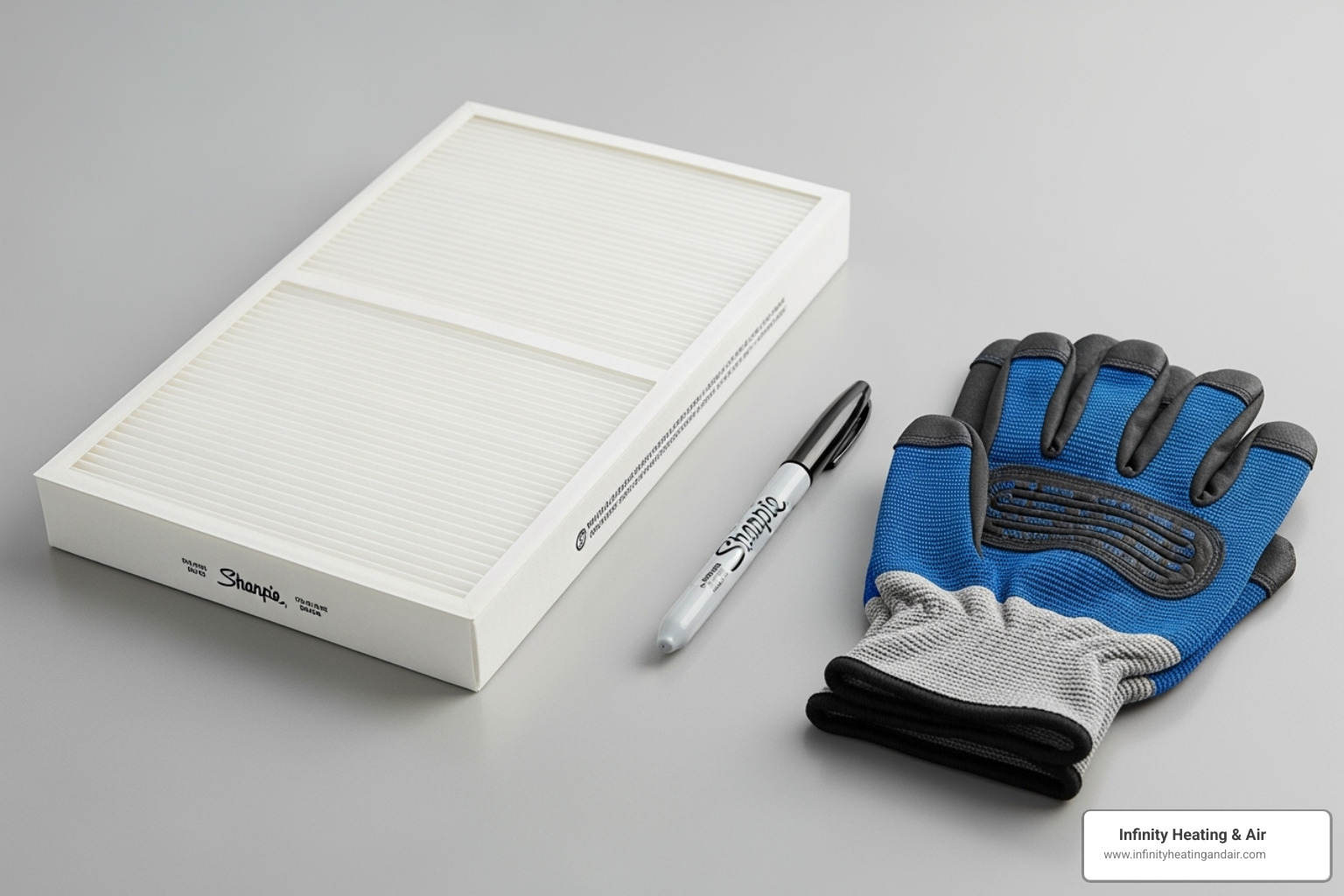
Step 2: Safely Locate and Remove the Old Filter
Safety is the top priority when working on your furnace.
- Turn off the power: Switch your thermostat to “Off,” then turn off the power at the furnace’s dedicated switch and the circuit breaker.
- Locate the filter slot: The filter is usually in a slot inside the blower compartment or in the return air duct just before it enters the furnace. Look for a cover or door.
- Note the airflow arrows: Before removing the old filter, notice the direction of the arrows on its frame. They should point toward the furnace’s blower motor.
- Remove the old filter: Gently slide the old filter out. Place it in a plastic bag for disposal to contain dust.
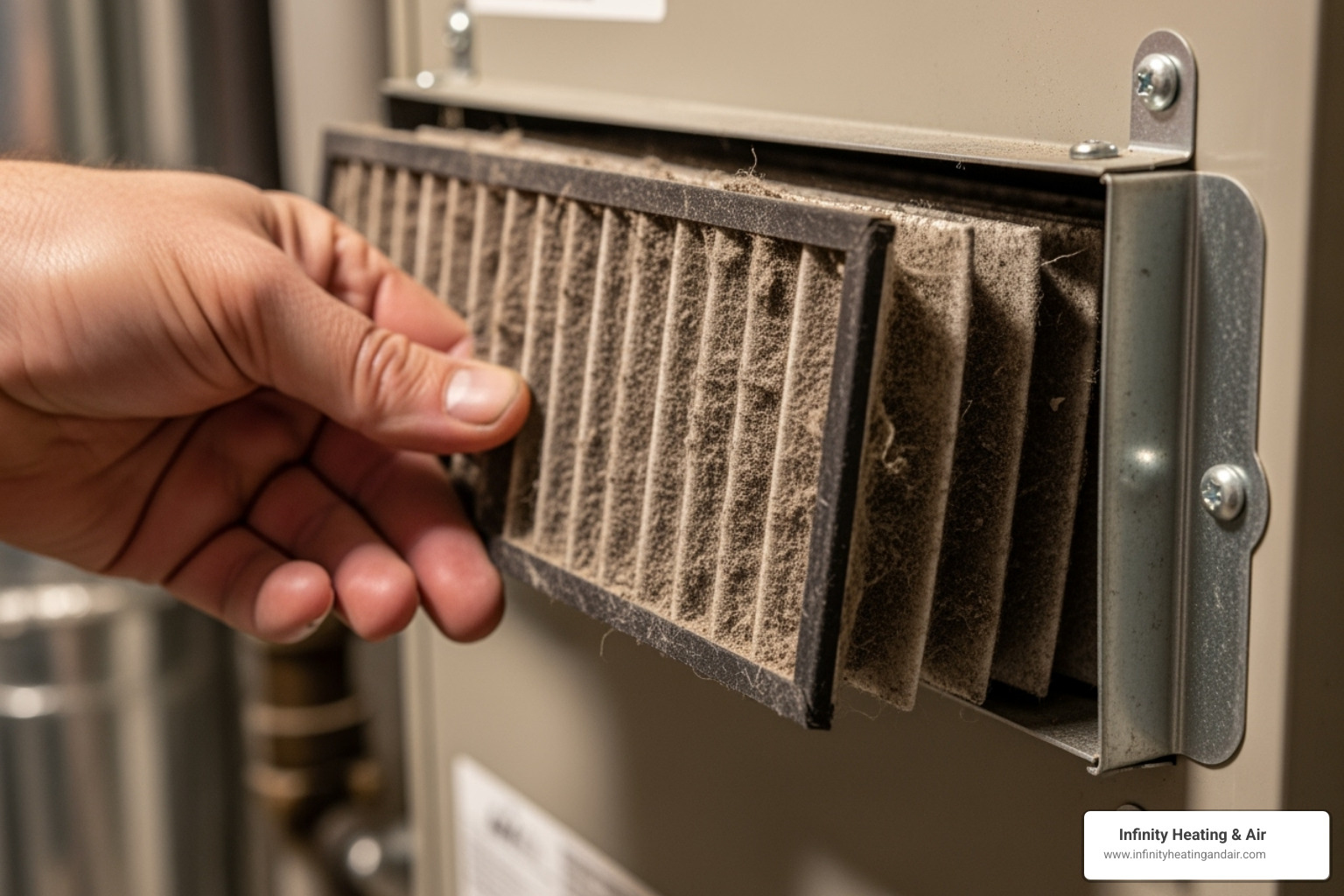
Step 3: A Guide to Proper Furnace Filter Replacement Installation
You’re almost done. Installing the new filter correctly is key.
- Check the airflow arrows: On the new filter, find the airflow arrows. They must point in the same direction as the old filter—toward the furnace. Installing it backward restricts airflow and strains the system.
- Insert the new filter: Slide the new filter into the slot. It should fit snugly with no gaps.
- Secure the cover: Close and fasten the access panel or door.
- Restore power: Turn the circuit breaker and power switch back on. Set your thermostat back to “Heat” or “Cool.”
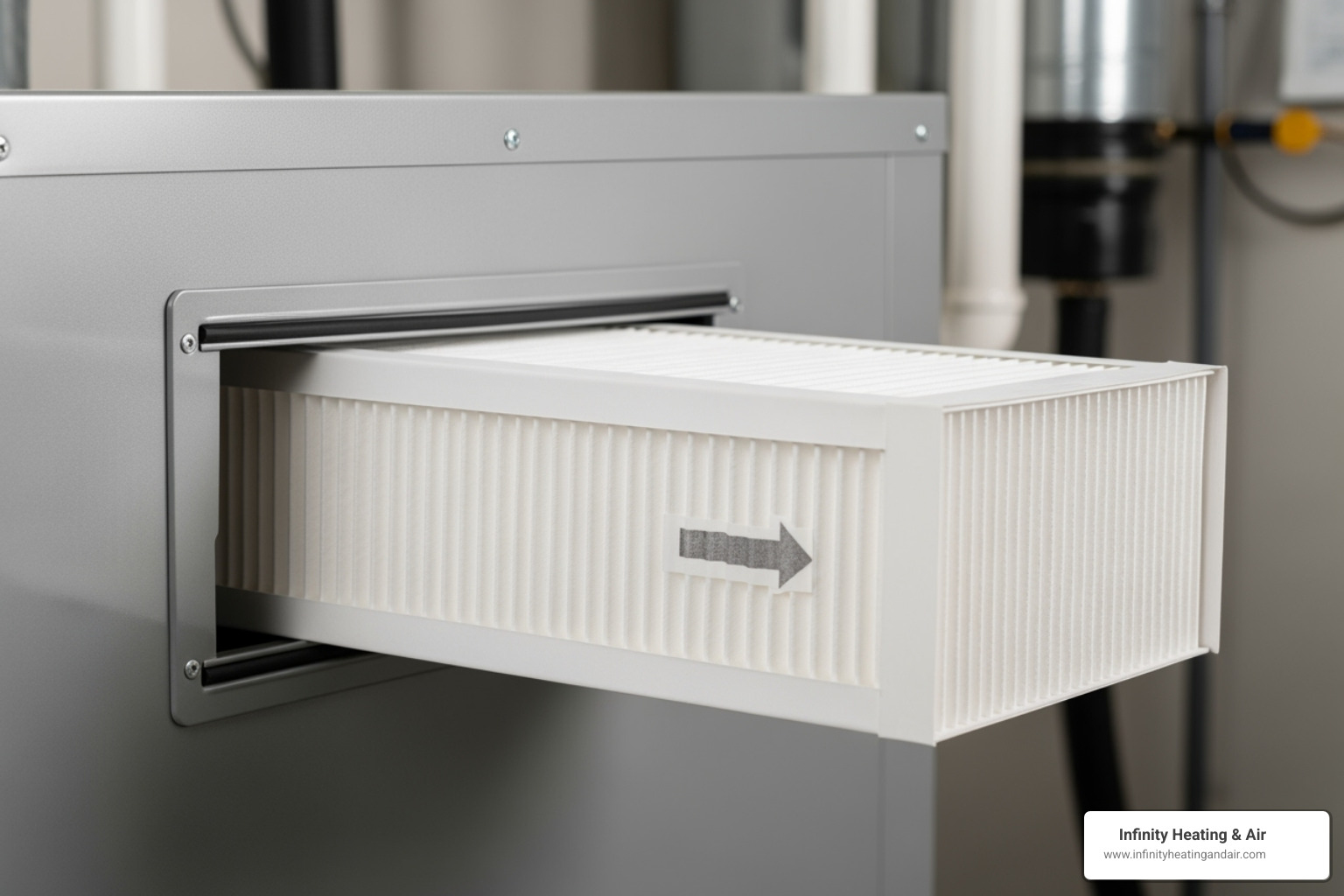
Congratulations! You’ve completed an essential home maintenance task. Set a calendar reminder for your next furnace filter replacement to stay on schedule.
The Consequences of Neglect: What Happens When You Don’t Change Your Filter
Skipping furnace filter replacement forces your HVAC system to work against a dense wall of dust and debris. This leads to several serious problems.
The immediate issue is restricted airflow, which puts tremendous strain on your system. The blower motor can overheat and burn out, the heat exchanger can develop cracks, and evaporator coils can freeze. This can lead to costly repairs and even complete system failure, a major problem during a Northwest Washington winter. Furthermore, neglecting this basic maintenance can void your warranty, as manufacturers require simple upkeep.
How a Dirty Filter Impacts Your Home and Health
The negative effects of a dirty filter extend throughout your home.
- Poor indoor air quality: A clogged filter can no longer trap pollutants. Instead, it allows dust, pet dander, mold spores, and pollen to circulate through your living space.
- Aggravated allergies and asthma: For those with respiratory sensitivities, the constant circulation of irritants can trigger symptoms like sneezing, watery eyes, and breathing difficulties.
- Inefficient heating and cooling: Restricted airflow leads to uneven temperatures, with some rooms being too hot and others too cold. Your furnace will run longer to compensate, increasing energy consumption without providing adequate comfort.
In short, you end up paying more for less comfort and dirtier air. Regular furnace filter replacement is a simple task that prevents these issues and makes a huge difference in your home’s function and feel.
Frequently Asked Questions about Furnace Filter Replacement
Homeowners often have questions about furnace filter replacement. Here are answers to the most common ones we hear from families in Northwest Washington.
How often should a furnace filter be changed?
The replacement schedule depends on your filter type and home environment.
- Standard 1-inch filters: Replace every 1 to 3 months.
- Thicker 4-inch filters: Replace every 6 to 12 months.
However, you may need to change your filter more often if you have:
- Pets: Pet dander and hair clog filters quickly.
- Smokers in the home: Smoke particles accelerate buildup.
- High pollen or construction dust: Environmental factors increase the load on your filter.
- Allergies or asthma: More frequent changes improve indoor air quality.
The best practice is to check your filter monthly and change it if it looks dirty, regardless of the recommended schedule.
What happens if I install the furnace filter backward?
The arrows on the filter frame indicate the correct direction for airflow. Installing a furnace filter backward causes several problems:
- Restricted airflow: The filter is not designed to work in reverse, which impedes air movement.
- Increased strain on the furnace: The system must work harder, leading to reduced efficiency, higher energy bills, and potential system damage.
- Ineffective particle capture: A backward filter won’t trap pollutants properly, allowing them to circulate in your home.
Always ensure the arrows point toward the furnace’s blower motor.
Can I clean and reuse my furnace filter?
It depends on the type of filter.
- Most filters are disposable (including fiberglass and many pleated types) and should never be cleaned. Attempting to wash or vacuum them will damage the filtration media and render them ineffective.
- Washable or reusable filters are specifically designed for this purpose and will be clearly labeled. They are typically electrostatic or have sturdy frames. Follow the manufacturer’s cleaning instructions carefully, ensuring the filter is completely dry before reinstalling.
When in doubt, it’s safest to assume your filter is disposable and replace it with a new one.
Conclusion
Furnace filter replacement is a simple, powerful home maintenance task that delivers significant rewards. In just a few minutes, you can improve your home’s air quality, lower your energy bills, and extend the life of your HVAC system.
You now have the knowledge to choose the right filter and install it correctly. This small effort is crucial for your family’s health, especially in Northwest Washington, where a clean filter is a key defense against seasonal allergens and pollutants.
Regular filter changes provide three key benefits:
- Cleaner air for easier breathing.
- Improved system efficiency for lower utility bills.
- Protection for your HVAC investment by preventing costly breakdowns.
This empowering DIY task gives you direct control over your home’s health and comfort. While changing a filter is straightforward, some HVAC needs require professional expertise. For system repairs, upgrades, or a comprehensive comfort solution, the team at Infinity Heating & Air is here to help. Contact us for your home comfort needs – we’re ready to ensure your family enjoys endless comfort.

